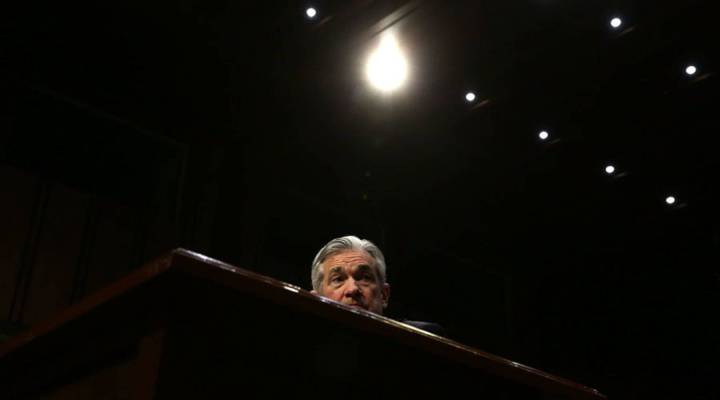
Fed raises interest rates, with more hikes to come
Share Now on:
Fed raises interest rates, with more hikes to come

The Federal Reserve has raised its benchmark interest rate for the second time this year and signaled that it may step up its pace of rate increases because of solid economic growth and rising inflation.
The Fed now foresees four rate hikes this year, up from the three it had previously forecast.
The central bank on Wednesday raised its key short-term rate by a modest quarter-point to a still-low range of 1.75 percent to 2 percent. The move reflects the economy’s resilience, the job market’s strength and inflation that’s finally nearing the Fed’s target level.
The action means consumers and businesses will face higher loan rates over time.
It was the Fed’s seventh rate increase since it began tightening credit in 2015, and it followed an increase in March this year.
When the Fed last met in May, it left its short-term rate unchanged. But it noted that inflation was edging near its 2 percent target after years of remaining undesirably low. Should inflation eventually pick up, the Fed might move to tighten credit more aggressively.
A gradual rise in inflation is coinciding with newfound economic strength. After years in which the economy expanded at roughly a tepid 2 percent annually, growth could top 3 percent this year. Consumer and business spending is powering the economy, in part a result of the tax cut President Donald Trump pushed through Congress late last year.
With employers hiring at a solid pace month after month, unemployment has reached 3.8 percent. Not since 1969 has the jobless rate been lower.
Beginning in 2008 in the midst of the financial crisis, the Fed kept its key rate unchanged at a record low near zero for seven years. It then raised rates once in 2015, once in 2016, three times in 2017 and now twice this year.
The Fed aims to achieve its mandates of maximizing employment and stabilizing prices by lowering rates to spur growth during times of economic weakness and raising rates to slow growth if the economy threatens to overheat. When the Fed tightens credit, it aims to do so without derailing the economy. But if it miscalculates and overdoes the credit tightening, it can trigger a recession.
The economic expansion has survived for nine years and is now the second-longest in history. It will become the longest if it lasts past June 2019, at which point it would surpass the expansion that lasted from March 1991 to March 2001.
While many economists think the current expansion will exceed the 1990′s streak, some worry about what might occur once the impact of the tax cuts begin to fade and the Fed’s gradual rate hikes begin to curb growth.
Diane Swonk, chief economist at Grant Thornton, has suggested that the economy could experience a “growth recession,” in which the gross domestic product slows so much that unemployment starts to rise.
The Fed’s pace of rate hikes for the rest of the year could end up reflecting a tug of war between a sturdy economy and the risks to growth, including from a potential trade war that could break out between the United States and such key trading partners as China, the European Union, Canada and Mexico. All those countries have vowed to retaliate against any U.S. tariffs with their own penalties against U.S. goods.
A global trade war would risk cutting into U.S. economic growth by depressing American export sales and raising inflation by making consumers and businesses pay more for imports.
The Fed’s meeting this week is to be followed by policy meetings of two other major central banks — the European Central Bank on Thursday and the Bank of Japan on Friday. While Japan’s central bank isn’t expected to make any major policy shifts, anticipation is rising that the ECB may outline as early as this week plans to begin paring its bond-buying stimulus program as a prelude to ending them altogether.
There’s a lot happening in the world. Through it all, Marketplace is here for you.
You rely on Marketplace to break down the world’s events and tell you how it affects you in a fact-based, approachable way. We rely on your financial support to keep making that possible.
Your donation today powers the independent journalism that you rely on. For just $5/month, you can help sustain Marketplace so we can keep reporting on the things that matter to you.


















